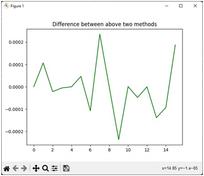
2.4 GHz vs 5 GHz WiFi: Understanding the Differences
Explore the key differences between 2.4 GHz and 5 GHz WiFi, including speed, range, compatibility, and best use cases, to optimize your wireless network.
Showing 25 posts (Page 1 of 5)
Advertisement

Explore the key differences between 2.4 GHz and 5 GHz WiFi, including speed, range, compatibility, and best use cases, to optimize your wireless network.

Explore 3 types of OCXOs with working operation and learn difference between AT, IT, and SC cut crystals.

Calculate frequency and duty cycle for 555 astable multivibrators using different methods. Also explores astable multivibrators using NOT gates.
Explore the relationship between 5G ARFCN and frequencies. Learn about the integer used to represent ARFCN and its values for specific 5G test frequencies.

Explore 5G diplexers, their applications in frequency management, and a list of leading manufacturers providing innovative solutions for 5G technology.

Convert between 5G NR ARFCN and frequency using our calculator. Understand the conversion formulas for 5G New Radio (NR) systems.
Learn about the 5G NR GSCN (Global Synchronization Channel Number), its parameters, and its role in identifying the center frequency for SS/PBCH blocks.

Explore the benefits and drawbacks of the 60GHz frequency band, including its bandwidth, security, range limitations, and absorption characteristics.
Learn the distinctions between A-carriers (non-wireline) and B-carriers (wireline) in cellular communication, including their typical operating frequencies.
Anritsu introduces new frequency options for its PIM Master, enabling LTE 800 MHz, UMTS 2100 MHz, and LTE 2600 MHz band testing, ideal for LTE network deployment and maintenance.

Explore the differences between AT cut and SC cut quartz crystals, including temperature stability, cost, and applications like OCXOs.
Explore the Bluetooth frequency range, channel allocations, and the importance of channel selection for optimal performance and minimal interference.

Explore different types of brain waves (Delta, Theta, Alpha, Beta, and Gamma), their frequency ranges, characteristics, and significance in brain function.
Learn about cable TV channel frequencies, how they are assigned, and how signals are downconverted for transmission. Includes a comprehensive frequency chart.

Explore the difference between Critical Frequency (CF) and Maximum Usable Frequency (MUF) in radio wave propagation. Learn about the formulas and how each affects radio communication.

Explore clock generator types, applications (like wireless base stations), and key features using a Silicon Labs example. Includes a vendor list.

Calculate coherence time based on velocity and frequency. Understand the coherence time formula and explore a practical example.

Understand the key differences between coherent and incoherent light, including frequency, phase, and examples like lasers vs. light bulbs.
Explore community radio stations (CRS) in India, including their frequencies, characteristics, and limitations. Learn about FM broadcasting and CRS coverage.
Understand the core differences between crystal oscillators and frequency synthesizers, their features, applications, and how they relate to each other in RF systems.

Calculate DDS output frequency based on tuning word, clock frequency, and phase accumulator bits. Includes formula and explanation.

Implementation of a 16-point FFT in Python using decimation-in-frequency, compared with SciPy's FFT. Includes code and output plots.

Understand the distinctions between diode mixers and harmonic mixers in RF systems, including their applications, frequency ranges, and Local Oscillator (LO) usage.

Explore the differences between diplexers and duplexers in RF communication systems, including their functionality, structure, and applications.
Learn about Doppler resolution in radar systems, its formula, and how it enables radars to differentiate between targets moving at different velocities.
Advertisement